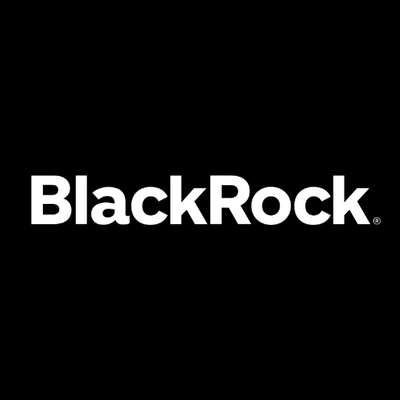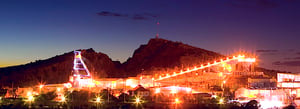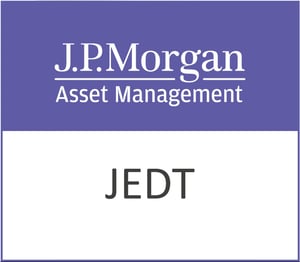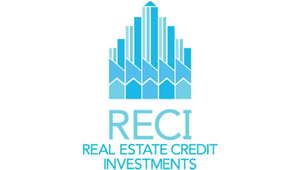BlackRock Greater Europe Investment Trust plc (LON:BRGE) has announced its Annual Report and Financial Statements 31 August 2024.
Performance record
| As at 31 August 2024 | As at 31 August 2023 | ||
| Net assets (£’000)1 | 640,300 | 565,710 | |
| Net asset value per ordinary share (pence) | 644.60 | 560.11 | |
| Ordinary share price (mid-market) (pence) | 601.00 | 527.00 | |
| Discount to cum income net asset value2 | 6.8% | 5.9% | |
| FTSE World Europe ex UK Index | 2219.24 | 1916.71 | |
| ========= | ========= |
| For the year ended 31 August 2024 | For the year ended 31 August 2023 | ||
| Performance (with dividends reinvested) | |||
| Net asset value per share2 | 16.4% | 19.2% | |
| Ordinary share price2 | 15.5% | 17.1% | |
| FTSE World Europe ex UK Index | 15.8% | 15.8% | |
| ========= | ========= |
| For the period since inception4 to 31 August 2024 | For the period since inception4 to 31 August 2023 | ||
| Performance (with dividends reinvested) | |||
| Net asset value per share2 | 797.6% | 671.0% | |
| Ordinary share price2 | 747.3% | 633.9% | |
| FTSE World Europe ex UK Index | 461.2% | 384.7% | |
| ========= | ========= |
| For the year ended 31 August 2024 | For the year ended 31 August 2023 | Change % | |
| Revenue | |||
| Net profit on ordinary activities after taxation (£’000) | 7,379 | 6,920 | +6.6 |
| Revenue earnings per ordinary share (pence)3 | 7.35 | 6.85 | +7.3 |
| ————— | ————— | ————— | |
| Dividends (pence) | |||
| Interim dividend | 1.75 | 1.75 | – |
| Final dividend | 5.25 | 5.00 | +5.0 |
| ————— | ————— | ————— | |
| Total dividends payable/paid | 7.00 | 6.75 | +3.7 |
| ========= | ========= | ========= |
1 The change in net assets reflects payments for shares repurchased into treasury, portfolio movements and dividends paid.
2 Alternative Performance Measures, see Glossary in the Annual Report and Financial Statements.
3 Further details are given in the Glossary in the Annual Report and Financial Statements.
4 20 September 2004.
Chairman’s Statement
Overview
The European economy entered 2024 on a weaker footing than previously expected after narrowly avoiding a technical recession in the second half of 2023. This was against a background of weak consumer demand. The European Central Bank maintained a tight monetary policy despite improving inflation, and adopted a cautious stance in light of persistent geopolitical instability and underlying inflationary risks. Despite the above, European equities delivered strong positive returns in the first half of 2024, as inflation figures continued their downward trend and in the expectation of further interest rate cuts by central banks.
Performance
Against this background, I am pleased to report that the portfolio performed well during the year, outperforming its reference index. The Company’s net asset value per share (NAV) returned +16.4% and the share price +15.5%. In comparison, the FTSE World Europe ex UK Index returned +15.8% over the same period (all percentages calculated in Sterling terms with dividends reinvested).
More details on this and the significant contributors to and detractors from performance during the year are given in the Investment Manager’s Report below. Since the financial year end and up to close of business on 1 November 2024, the Company’s NAV has decreased by 7.0% compared with a fall in the FTSE World Europe ex UK Index of 3.4% over the same period.
Revenue earnings and dividends
Your Company’s total revenues each year are a reflection of the dividends we receive from portfolio companies. The revenue return per share for the year ended 31 August 2024 amounted to 7.35p per share, which compares with 6.85p per share for the previous year, an increase of 7.3%.
At present, the dividends paid from the Russian securities in the Company’s portfolio are held in a custody ‘S’ account in Moscow. The balance on the ‘S’ account as at 31 August 2024 was equivalent to approximately £2.45 million at the exchange rate applicable on that date. The Company’s Investment Manager is monitoring the receipts into the ‘S’ account against dividends announced by the portfolio companies, although there is no certainty that the sums in the ‘S’ account will ever be received by the Company. They are not recognised in the Company’s net asset value or in its income statement.
The Board also monitors the underlying local value of the Russian securities on the Moscow Stock Exchange which at 31 August 2024 were approximately £23.1 million at the exchange rate applicable on that date, although again there is much uncertainty whether the Company will ever be able to receive any value in respect of these securities. These investments have been held at a nominal value of £0.01 in the net asset value at 31 August 2024.
In April, the Board declared an interim dividend of 1.75p per share (2023: 1.75p) and the Board is proposing the payment of a final dividend of 5.25p per share for the year (2023: 5.00p). This, together with the interim dividend, makes a total dividend for the year of 7.00p per share (2023: 6.75p), an increase of 3.7%. The dividend will be funded from revenue received in the year. Subject to shareholder approval, the dividend will be paid on 20 December 2024 to shareholders on the Company’s register on 22 November 2024, the ex-dividend date being 21 November 2024.
Management of share rating
Over the year to 31 August 2024, the Company’s shares have traded at an average discount of 5.6%. During the year, the Company purchased 1,668,000 ordinary shares at an average price of 613.13p per share and an average discount of 5.4% for a total cost of £10,227,000. Since the year end up to 4 November 2024, a further 1,094,011 ordinary shares have been bought back at an average price of 578.60p per share for a total cost of £6,330,000. All shares have been placed in treasury.
As reported in the Half Yearly Financial Report, the Directors exercised their discretion not to operate the half yearly tender offers in November 2023 and May 2024. It was also announced on 24 September 2024 that the Board had decided not to implement a semi-annual tender offer in November 2024. Over the six months to 31 August 2024, the average discount to NAV (cum income) was 4.9% and the discount as at close of business on 23 September 2024 was 5.6%. Against a background of volatile market conditions and the Company trading at the narrowest discount within its peer group at that date, the Board concluded that it was not in the interests of shareholders as a whole to implement a semi-annual tender offer in November 2024.
The Directors recognise the importance to investors that the market price of the Company’s shares should not trade at a significant premium or discount to the underlying NAV. Accordingly, in normal market conditions, the Board may use the Company’s share buy back and share issue powers, or operate six monthly tender offers, to ensure that the share price does not go to an excessive discount or premium to the underlying NAV. Resolutions to renew the Company’s semi-annual tender offers and the authorities to issue and buy back shares will be put to shareholders at the forthcoming Annual General Meeting.
Board composition and policy on tenure
Having served as a Director of the Company since April 2013, and as Chair since November 2016, it is my intention to step down from the Board in due course, subject to a suitable successor being identified. As part of orderly succession planning, the Board commenced a search in the year to identify a new Director, assisted by a third-party recruitment firm. As part of this process, consideration is being given to ensuring that the Board retains an appropriate balance of skills, knowledge and experience, independence and diversity that meets or exceeds relevant best practice. The process is underway and a further announcement will be made in due course.
The Board has also decided to introduce guidelines on Directors’ tenure, with the intention that (under normal conditions) no Director will normally serve on the Board for more than nine years, or twelve years in the case of the Chairman. The longer time limit for the Chairman’s tenure is to allow for continuity of leadership in circumstances where a Chairman is appointed from the ranks of existing Board members after having already served on the Board for a period of time. In setting this policy, the Board is mindful that two Board members have exceeded the proposed nine-year limit. To ensure an orderly Board refreshment process, the implementation of the new guidance on tenure will therefore be phased in over a period of time.
The Board is cognisant of the benefits of a diverse range of skills on the Board and the Company is compliant with the Parker Review recommendation that FTSE 350 companies have at least one director from an ethnically diverse background by 2024. In accordance with the Listing Rules we have disclosed the ethnicity of the Board and policy on matters of diversity in the Corporate Governance Statement in the Annual Report and Financial Statements. The Board is also compliant with the recommendations of the FTSE Women Leaders Review. The review set targets for FTSE 350 companies which are designed to achieve boards with 40% female representation (previously 33%) and at least one woman in the role of Chair or Senior Independent Director on the board.
Shareholder communications
The Board appreciates how important access to regular information is to our shareholders. To supplement our website, we offer shareholders the ability to sign up to the Trust Matters newsletter which includes information on the Company, as well as news, views and insights. Further information on how to sign up is included on the inside cover of the Annual Report and Financial Statements.
Outlook
There are uncertainties in the outlook based on events such as the recent elections both in the US and Europe, inflation and interest rates, as well as geo-politics. However, a combination of interest rates starting to trend downwards (the ECB has indicated a clear direction after easing policy twice since June) and signs of moderate but improving economic momentum, give reasons for cautious optimism for the European economy and its stock markets. European stocks are attractively valued both relative to their history and global markets, especially so in comparison to the US market. This could bring positive returns, helped by the macroeconomic environment, the potential for improvement in corporate earnings and the increased use of buybacks by European management teams returning capital to shareholders.
Annual General Meeting
The Annual General Meeting (AGM) of the Company will be held in person at the offices of BlackRock at 12 Throgmorton Avenue, London EC2N 2DL on Tuesday, 10 December 2024 at 12 noon. Details of the business of the meeting are set out in the Notice of Annual General Meeting in the Annual Report and Financial Statements.
For the benefit of shareholders who are unable to attend this year’s AGM in person, we have arranged for the proceedings to be viewed via a webinar. You can register to watch the AGM by scanning the QR Code inside the cover of the Annual Report and Financial Statements or by visiting our website at www.blackrock.com/uk/brge and clicking on the registration banner. Please note that it is not possible to speak or vote at the AGM via this medium and joining the webinar does not constitute attendance at the AGM. Shareholders wishing to exercise their right to attend, speak and vote at the AGM should either attend in person or exercise their right to appoint a proxy to do so on their behalf.
ERIC SANDERSON
Chairman
5 November 2024
To discover more about the BlackRock Greater Europe Investment Trust click here
Investment Manager’s Report
Market review
For the year ended 31 August 2024 performance was positive with a share price total return of 15.5% and underlying NAV return of 16.4%. By way of comparison, the reference index (FTSE World Europe ex UK Index) returned 15.8% over the same period. All percentages are calculated in Sterling terms with dividends reinvested. Despite the strong performance, the market was volatile, driven by rapidly shifting market narratives concerning the resilience (or lack thereof) of global economic growth and the future path of interest rates.
Reviewing events chronologically, the Company’s financial year started with persistently high interest rates weighing on sentiment. Equity markets moved off their lows from October 2023 as inflation in both the US and Europe surprised to the downside leading to a downward shift in interest rate expectations and enabling policy makers at the Federal Reserve and the European Central Bank to pause further rate hikes. Cyclical and long-duration assets led the charge as investors anticipated rate cuts in 2024. This positive momentum carried over into the first quarter of 2024, finding additional support from better-than-expected macroeconomic data as well as robust corporate earnings. 2023 full year results – reported in the first quarter of 2024 – saw capital expenditure announcements from large US technology groups which surprised significantly to the upside and led to strong share price moves in technology and semiconductor related issuers. The market overall favoured cyclical and quality growth assets, which generally benefited the Company’s portfolio positioning during this period.
Beginning in the early second quarter of 2024 the market’s enthusiasm ebbed, with higher inflation and weaker growth data causing a repricing in interest rate expectations, a re-emergence of ‘hard landing’ fears and a coincident change in equity market leadership – with defensive and value stocks favoured over cyclicals and growth.
The distressing ongoing conflicts in Ukraine and the Middle East were never far from the news. While the human costs of these events are enormous and tragic, the impact on financial markets has been limited – with major commodity prices generally well behaved and an imperceptible influence on major European company earnings. Closer to home, French parliamentary elections led to a temporary rise in risk premia applied to French domiciled assets, but there is limited evidence of any impact on future earnings so far.
Portfolio performance
Defensives
Reviewing performance at the single stock level, two very different defensive businesses – Novo Nordisk (Novo) and RELX – were top contributors. Novo was the Company’s top performing stock over the period. Several years of exceptional share price developments have left the company’s merits better recognised by market participants today, with Novo growing into the largest holding in the Company over the past two years.
Over the last year Novo shares continued to rise due to strong sales growth of its GLP-1 drugs, ongoing expansion into the obesity treatment market, positive clinical trial results, as well as regulatory approvals. Its obesity blockbuster drug Wegovy experienced surging demand globally, particularly so in the US, with sales increasing by over 200% year-on-year in 2023, adding approximately US$2.4 billion to group revenues.
Despite the gradual emergence of new players in the obesity market, we take comfort from the fact that most new entrants are still in the early development stage with potentially new drugs years away from entering this highly attractive market; they also fail to offer clear differentiation from Novo’s injectable product portfolio thus far.
Additionally, the combination of a large total addressable market in obesity and continued supply shortages experienced by the leading manufacturers means this segment should offer room for multiple players; in fact, having more than two players would help to develop the category benefiting all companies involved. For now, we expect the obesity market to remain dominated by Novo and Eli Lilly.
Looking ahead, we remain positive on Novo’s outlook. We anticipate several catalysts to drive the shares higher, including positive Phase III data for CagriSema, which is currently undergoing clinical trials. Early results have shown promising efficacy in weight reduction and glycaemic control compared to existing treatments, which could make it the best-in-class drug when it launches in the second half of 2025.
The closure of the Catalent deal, a strategic collaboration to expand production capacity for Wegovy, should significantly boost manufacturing capacity to serve currently unmet demand, as 1.2 billion people are expected to live with obesity by 2030, up from 800 million in 2020. From here, we expect Novo Nordisk to continue growing sales at 20% top line with over proportional growth in operating earnings.
Secondly, RELX showed strong share price developments on the back of a step change in its organic sales growth profile. As a leading provider of information-based analytics and decision tools for professional and business customers, RELX has undergone a significant business transformation in recent years. It has invested heavily in value-add tools, particularly in their subscription-based ‘Scientific, Technical, and Medical’ (STM) and ‘Legal’ divisions, which tend to run on contract structures of at least three to five years. This provides excellent revenue visibility, as for many of its clients renewing those subscriptions represents a business-critical decision, with high switching costs.
Above all, RELX’s strength lies in the vast amount of data they possess. Instead of just selling data, they build state of the art analytical tools. One example of this is in the Legal division which allows lawyers to search for historic case verdicts and assist in drafting legal documents. Their Legal division generated 2% organic growth pre-Covid which has accelerated to 6% since then.
Finally, following years of investing smartly in those capabilities, RELX has managed to emerge as an ‘artificial intelligence (AI) winner’. It benefits from holding intellectual property (IP) and has made significant steps in monetising AI, already generating revenue from their AI tools, leaving potential for further acceleration in revenue growth in future years.
Consumer cyclical
Shares in high-end sports car manufacturer Ferrari, a quasi-luxury company in the autos sector, also contributed successfully rising by 50% over the period. This success can be attributed primarily to a strong build out of its order book, a significant shift in mix and personalisation revenues that increased the average sale price per car by over 10% over the past year.
Ferrari’s strategy of focusing on limited production volumes, selling just 14,000 cars per year, continues to create elevated levels of brand desire, an unparalleled degree of pricing power and has demonstrably enhanced its earnings resilience over time. Despite weakness in the broader consumer market, particularly among ‘aspirational buyers’, Ferrari has managed to stay largely unaffected as 74% of its cars were sold to existing customers in 2023.
Major upcoming product launches, including the 12 Cilindri and 12 Cilindri Spider sportscars, ensure the group’s product pipeline remains strong and should also support attractive growth in the coming years. Additionally, brand equity remains carefully managed with its high-quality management team ensuring that the second-hand market supports their overall pricing strategy.
One of Ferrari’s greatest advantages lies in its unique ability to increase or restrict supply of any one model at any given time, allowing for increased levels of control over the progression in its operating margins and cashflows. Ferrari enjoys excellent visibility provided by an order book that provides revenue coverage well into 2026. All told, we consider the company to be among royalty in European markets as Ferrari remains one of the highest quality assets in our universe with operating earnings compounding at +10% for the foreseeable future.
Unlike Ferrari, the broader luxury sector has struggled this past year, with our long-term holding in LVMH being among the largest detractors. Indeed Hermès, which operates a business model more aligned to Ferrari, has also faced some difficulties.
For the better part of a decade the luxury goods sector has enjoyed strong momentum delivering 10% organic growth on average. In the past three years this stellar growth accelerated further, with top brands benefiting from both pricing power and very positive global consumption trends. This was despite the Chinese consumer contributing materially less to growth than in prior years. Overall, we identify two negative factors being faced by luxury companies that have led to a more muted near-term growth outlook and, in some cases, operating deleverage, namely: a weaker-for-longer consumer backdrop in China and ‘aspirational’ buyers cutting back on discretionary spending in the US.
Zooming in on China, this has been a major growth engine for the luxury sector for much of the past decade, driven by fast-rising wealth and increasing consumer awareness. However, in more recent times, a weaker economic environment, declining property values and restrictive government policy has dampened consumer confidence. This has resulted in more volatile demand trends in what remains an important luxury end-market, comprising circa 30% of sales on average for most brands. Currently, only a select few operators, counting Hermès and Louis Vuitton among them, are enjoying positive growth with Chinese consumers, while most are suffering. Despite those cyclical headwinds we believe that long-term prospects for luxury goods consumption in China are bright and structural drivers remain firmly intact. In the face of negative headlines, average incomes are still rising year-on-year, the middle class continues to expand and it is expected that China’s ultra-high-net-worth population grows 47% between 2023 and 2028 (source: Knight Frank). Meanwhile, a recent shift in government policy suggests more of a focus on stimulating consumption as a driver of GDP growth than in the past. While we are not out of the woods just yet, we believe that Chinese appetite for luxury goods remains intact.
Industrial cyclical
Technology, and more specifically the semiconductor subsector, was the source of some of the biggest winners of the year in the wafer fabrication equipment companies ASML and ASM International (ASMI) but also the biggest detractor in STMicroelectronics.
We have regularly cited in previous reports the attraction of running large exposures to this industry as the segment serves many structurally growing end markets. The businesses we own in this industry can be regarded as enablers of large transformational changes occurring in the world around us. Those include the decarbonisation of transport, elevated demand for computing power to conduct data analytics, the omnipresence of inter-connected devices, Industry 4.0, as well as accelerated demand for high end logic chips as we move to more wide scaled adoption of generative AI applications, which in itself demands significant build out of data infrastructure.
Overall, demand for leading edge chips was driven by a significant increase in investment spend by US tech giants such as Amazon Web Services, Microsoft, Alphabet and Meta which in large part went into the expansion of their AI capabilities. ASML and ASMI are prime examples of why technological breakthroughs are not just contained to the US, with some of the key enabling technologies coming out of those two businesses listed in Europe.
Last year we argued we were seeing a trough in the semiconductor cycle and were positioned to play a multi-year recovery in the sector. This recovery has started to materialise, with order numbers coming through strongly. In 2023, ASML achieved net sales of €27.6 billion, reflecting 30% growth compared to the previous year. By the end of 2023 ASML had built a robust order backlog of €39 billion, bolstered by a record order intake of €6.3 billion in the fourth quarter of 2023. This growth was driven by high demand for their cutting-edge lithography tools, Extreme Ultraviolet systems. With 2024 guided to be a transition year for the company, ASML is preparing for a healthy market recovery in 2025 as it ramps-up capacity and expects further growth driven by advancements in AI and demand for new high bandwidth memory technologies.
Like ASML, ASMI also enjoyed strong order momentum, despite experiencing heavy quarterly fluctuations during 2023. By the first quarter of 2024, ASMI’s order intake had risen to €698 million, showing a 10% increase compared to the first quarter of 2023, supported by strong demand in advanced semiconductor technologies like gate-all-around (GAA) and increased memory orders. ASMI’s fortunes are closely tied to leading edge chip architectures moving to 2 nano-meter nodes with manufacturers like TSMC adopting ASMI’s cutting edge GAA technology in the process. ASMI also made strides in silicon carbide Epitaxy technology, a key growth area, primarily used in high-power and high-temperature applications. We expect both companies to experience multi-year growth as the semiconductor cycle continues to recover and technology roadmaps of its key clients require increased spend well into the second half of the decade.
Against this stronger background, the industry has also faced challenges as normalisation of extraordinary demand patterns experienced during Covid led to a prolonged period of order disappointments and inventory destocking in auto and industrial verticals.
STMicroelectronics, the portfolio’s largest detractor over the period, struggled primarily due to losing market share in China and seeing its industrial business shrink by half. Uncharacteristically, the company had to lower its full-year guidance twice in 2023, attributing the cuts to weakening demand in key sectors like automotives and industrials. Those challenges were caused above all by a slowdown in electric vehicle sales in Europe, as well as inventory build-up across different industry verticals.
The subsequent decline in customer orders led to underutilised fabrication plants, causing adverse effects on STMicroelectronics’ operating profitability and significant downgrades to consensus expectations. Considering the continued weaker outlook for both the auto and industrial end markets and taking into consideration the general predicament traditional European car manufacturers find themselves in, we are currently re-assessing positioning in this part of the portfolio.
Portfolio changes
As long-term investors we aim to give portfolio company management teams sufficient time to execute on their respective value creating strategies and, with this in mind, it is pleasing to note that over the course of the financial year portfolio turnover was just below 22% – in line with target holding periods of three to five years. The key transactions accounting for this turnover and summaries of the careful due diligence undertaken are outlined below.
Danish freight forwarding and logistics company DSV had been held since 2016 and one of the key tenets of the investment case was the management team’s track record in creating value through acquisitions and fostering a best-in-class culture. However, several red flags started to emerge over the course of last year. Firstly, the company announced a US$10 billion exclusive logistics joint venture with Saudi’s NEOM city project. Not only did this raise concerns about corporate governance, capital intensity of the project and pointed to a material shift in a well-rehearsed strategy, it also raised questions around heightened execution risks potentially destroying value over time. Additionally, DSV made significant leadership changes in early 2024 with its highly regarded CEO stepping down after 15 years in the job. Lastly, from an organic growth perspective, DSV’s operations continued to be adversely impacted by low growth in global trading volumes which remain on a slow recovery path overall. This combination of factors lowered our conviction in the investment thesis and led to exiting the shares.
Diminished faith in company management was also a contributing factor in the sale of pharmaceutical equipment supplier Sartorius Stedim. The company saw its revenues drop by 18% in the first nine months of 2023 and was forced to revise downits full-year sales and earnings guidance due to reduced demand and excess inventories held by clients. Whilst this appears a forgivable event, we took serious issue with the overpriced acquisition of Polyplus which was closed in the summer of 2023. This deal raised questions around capital allocation, as the multiple paid was high: partially interpreted as an attempt to buy in growth at a time of weaker demand, Stedim had to raise equity to finance the transaction diluting existing shareholders in the process. Like DSV, we felt this was a material break of our original thesis and decided to redeploy capital into issuers where conviction levels were meaningfully higher.
Finally, we added L’Oréal to the portfolio. The company has been almost uniquely focused on the beauty category since its foundation in 1909. As the world’s largest cosmetics company, L’Oréal benefits from a diverse brand portfolio that spans mass-market to luxury beauty products, appealing to a wide range of consumers. The company’s consistent investment in research and development keeps it at the forefront of beauty trends, such as the growing demand for sustainable and eco-friendly products, while its investments in technology and data analytics have enhanced its ability to understand consumer preferences and deliver personalised experiences, meaning it is well placed to capitalise on the growing online beauty market. Additionally, its continued expansion into emerging markets, particularly in Asia and Latin America, offers substantial growth opportunities, whilst further premiumisation of its product offerings could boost profitability.
Outlook
Following the “AI Boom” at the beginning of 2024, at the time of writing the global investment community had begun a more critical assessment of the return on investment on the large amounts of money pouring into the build-out of AI infrastructure. Market concerns have centred around the sustainability of this AI capital expenditure cycle. While some of the initial excitement was clearly overdone, we remain of the view that new technological breakthroughs often follow a familiar pattern – investors overestimate their potential in the near term while underestimating what is possible in the medium to longer term. We suspect the adoption of AI and its different use cases are no different in that regard. The race to build leading AI infrastructure is still in its infancy, with significant competitive momentum pushing cash rich companies to continue to innovate and invest to stay ahead. It is clear hardware infrastructure roadmaps are not keeping up with the pace of development in AI, leading to a widening gap between model training computational needs and the key infrastructure that is available in compute, rack design, network, cooling systems and power. None of today’s technology leaders can afford to be left behind in delivering breakthrough technologies in what could be the defining technological development of this generation.
This is relevant to us because the European market is home to an ecosystem of companies which possess the enabling technologies required in these transformational changes – not just AI adoption, but also the energy transition and global efforts to reorganise supply chains. Many of these businesses sell to global customer bases and are the world leaders in their fields. These competitively advantaged and secular growth businesses have become an increasingly important component of the overall market whilst undifferentiated ‘older economy sectors’ like telcos, auto and energy producers have shrunk in size over the last decade.
Alongside the investment opportunities afforded by these structural forces, we detect a cyclical upturn in a variety of industries like construction, life-sciences and chemicals which have suffered from pronounced volume declines for the best part of two years. Global manufacturing Purchasing Managers Indices have stayed below 50 for the last 23 months, signalling the longest period of contraction since 1951; importantly, in many end markets management teams are now talking about stabilisation of demand with painful inventory adjustments having come to an end. European construction is a good example, where easing financial conditions are helping activity levels to recover following the 40-45% collapse in new built residential volumes over the past couple of years.
Against the backdrop of a structurally improved market composition and a cyclical recovery, we see valuations in the European market at a record wide discount relative to the US. This dichotomy does not make sense to us. A healthy market operates as a discounting mechanism and the investment community’s myopic focus on near term problems should soon make way for the medium- to long-term opportunities. We see 2025 as a recovery year for earnings and beyond that we envisage a multi-year period of healthy profit growth, alongside the potential for this historic valuation gap to the US to narrow. Those prepared to take the optimistic view should be rewarded over time.
STEFAN GRIES AND ALEXANDRA DANGOOR
BLACKROCK INVESTMENT MANAGEMENT (UK) LIMITED
5 November 2024
Ten largest investments
Together, the Company’s ten largest investments represented 51.8% of the Company’s portfolio as at 31 August 2024 (2023: 53.4%)
1 ► Novo Nordisk (2023: 1st)
Health Care company
Market value: £61,540,000
Share of investments: 8.9%
Novo Nordisk is a Danish multinational pharmaceutical company and a leader in diabetes care. Novo Nordisk is expected to post strong earnings and cashflow growth driven by demand for Ozempic which treats Type 2 diabetes and its weight management drug Wegovy. The latter has recently provided evidence of reducing major adverse cardiovascular events by 20%.
2 ▲ ASML (2023: 3rd)
Technology company
Market value: £49,827,000
Share of investments: 7.2%
ASML is a Dutch company specialising in photolithography systems for the semiconductor industry. The company is at the forefront of technological change, investing in leading research and development to capture the structural growth opportunity coming from growth in mobile devices and microchip components. High barriers to entry within the industry give ASML a protected position with strong pricing power allowing growth in margins.
3 ▲ RELX (2023: 4th)
Consumer Discretionary company
Market value: £44,732,000
Share of investments: 6.5%
RELX is a UK based multinational information and analytics company with high barriers to entry in most of its divisions, including scientific publishing. Their capital light business model enables a high rate of cash conversion with repeat subscription-based revenues. The business benefits from increasing usage of data globally supporting their data analytics business.
4 ▼ LVMH (2023: 2nd)
Consumer Discretionary company
Market value: £36,935,000
Share of investments: 5.3%
LVMH is a French multinational corporation specialising in luxury goods. The group has a strong and well-diversified portfolio of luxury brands ranging from handbags to spirits to cosmetics. LVMH’s business model enjoys high barriers to entry due to the heritage, provenance and exquisite quality of its product offering. Its consistent brand investment through economic cycles has helped to spur brand desirability and allowed for significant pricing power.
5 ▲ Ferrari (2023: 11th)
Consumer Discretionary company
Market value: £30,706,000
Share of investments: 4.4%
Ferrari is an Italian luxury sports car manufacturer emphasising exclusivity, performance and quality globally, with a strong focus on innovation and delivering unique driving experiences to its clientele. There is a lot of excitement for 2024 as limited release models are being introduced including the SF90 XX Stradale, followed by the Spider. Both cars are expected to come at higher price points that will be additive to Ferrari’s overall revenue mix. Demand will remain strong beyond 2024, with the company’s order book already sold out up to 2026.
6 ▲ Hermès (2023: 7th)
Consumer Discretionary company
Market value: £28,156,000
Share of investments: 4.1%
Hermès is a French luxury design house specialising in leather goods, lifestyle accessories, home furnishings, perfumery, jewellery, watches and high-end clothing. With good brand management and craftsmanship, Hermès products are supply constrained and the company enjoys strong earnings visibility as some of its most iconic products are sold on allocation via waiting lists. Hermès has been run in a conservative fashion for generations with strategic decisions taken with the longest of timeframes.
7 ▲ Safran (2023: 10th)
Industrials company
Market value: £27,166,000
Share of investments: 3.9%
Safran is a French multinational supplier of aerospace, defence and security systems. The industry has emerged from a heavy investment period and Safran is well-placed to benefit from continued strength in its best in class after-market business and strong execution in its LEAP engine program which should drive growth for the next decade.
8 ▲ Schneider Electric (2023: n/a)
Industrials company
Market value: £26,774,000
Share of investments: 3.9%
Schneider Electric is a French multinational corporation specialising in digital automation and energy management. The group is a global industrial technology leader in electrification, automation and digitization to smart industries, resilient infrastructure, future-proof data centers, intelligent buildings and intuitive homes.
9 ▲ ASM International (2023: 13th)
Technology company
Market value: £26,551,000
Share of investments: 3.8%
ASM International is a Dutch international company that designs and manufactures equipment and process solutions to produce semiconductor devices for wafer processing. The company aims to create sustainable, long-term value for their stakeholders and a degree of recovery in logic/foundry. The company is also set to benefit from the increasing importance of power emerging technologies such as Artificial Intelligence (AI), where we have seen a step change with the roll out of generative AI tools in 2023.
10 ▲ Linde (2023: n/a)
Basic Materials
Market value: £26,276,000
Share of investments: 3.8%
Linde is a global multinational chemical company and, since 2018, domiciled in Ireland and headquartered in the United Kingdom. Linde is the world’s largest industrial gas company by market share and revenue, serving customers in the health care, petroleum refining, food, beverage carbonation, fiber-optics, steel making, material handling equipment, chemicals and water treatment industries.
All percentages reflect the value of the holding as a percentage of total investments.
Arrows indicate the change in relative ranking of the position in the portfolio compared to its ranking as at 31 August 2023.
To discover more about the BlackRock Greater Europe Investment Trust click here





































